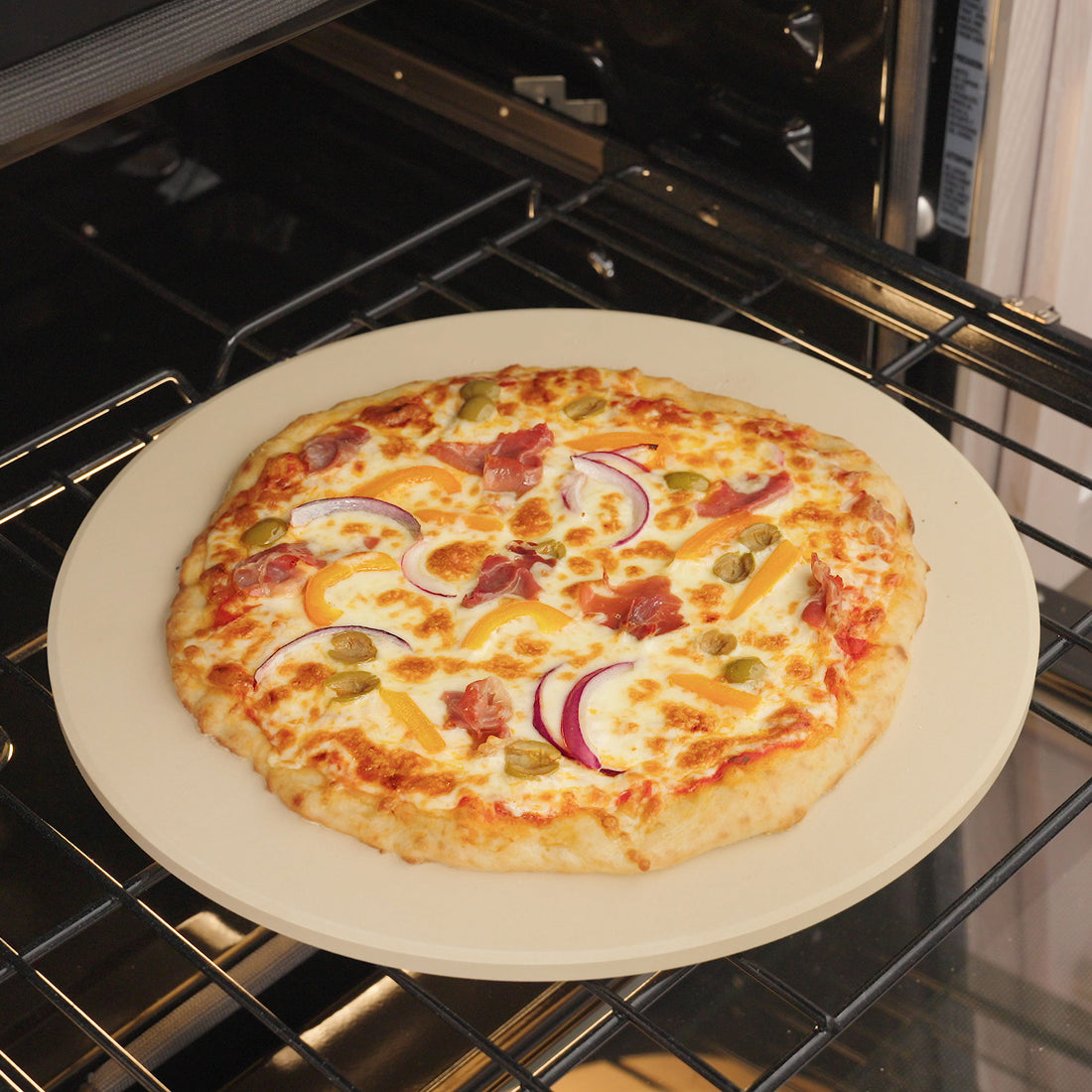Unless your home is equipped with a brick, wood-fired pizza oven, a pizza stone for your oven is going to be one of your best friends. Not only does this baking stone make superior pizza, but it also can be used for other foods. It is not a one-hit-kitchen-wonder.
Do Not Skip This Stone
If homemade pizza is part of your future, a pizza stone should also be in that future. Conventional ovens do not get as hot as pizza ovens, and that heat is where the lovely crispiness comes from. Pizza stones are the best way to mimic the setting of a wood-fired pizza oven by absorbing and maintaining heat to create a lighter, more airy crust and a gooey cheese.
At this point you might be asking yourself, “Can’t I just use a pizza pan or baking sheet?” Yes, but also no. Cooking a pizza on slick metal will trap any moisture that will come out of the dough and potentially create a soggy middle to your pizza when the outside is well done. Pizza or baking stone materials are created to absorb heat and are porous, so moisture is immediately pulled away from the dough and evaporates. The heat conductivity of the stone also makes for a more even bake, so there are no “hot spots.”
Family Stones
Pizza stones and bread-baking stones all fall under the baking stone category. Pizza stones come in two general shapes; round and rectangular/square. The shape of the stone will not affect the taste of your food, but it is thought that the rectangular stone will give you a greater surface area. A rectangular stone can also be more forgiving for crust that didn’t turn out as round as intended.
Different materials from which pizza stones are made will make a difference in durability and baking speed. Most pizza stones are made from ceramic, clay, and cordierite. Baking steels are out there, but for the sake of this article we will concentrate on the stones.
Ceramic is a very common material used for baking stones as it is heat-resistant, an inexpensive material and does a fantastic job of evenly distributing heat. When properly cared for, a ceramic pizza stone can last for years. Ceramic’s disadvantage is that it is brittle and can be prone to thermal shock. That means rapid heating or cooling could lead to its demise.
Clay is a type of ceramic baking stone. The difference being that it is less expensive than ceramic and it is more porous. The level of porosity in these slabs is a disadvantage as it means they are more susceptible to breakage, and they absorb more oils which means they are more difficult to maintain.
If you are willing to invest in a cordierite pizza stone, it is stronger than ceramic, but conducts heat just as well. Cordierite has a low thermal expansion, which means it is less prone to breaking when exposed to temperature changes.
The best home for your baking stone is in the oven. Keeping your stone in the oven will prevent breakage from thermal shock or accidental dropping. These stones are not light. Using the stone in your oven will also help your oven heat more evenly over-all. It will maintain a consistent heat while baking/roasting any meal, regardless of whether the stone is in direct use.
Enhancing the Stone
To use your stone, it must be heated up along with the oven. Once the oven is preheated to its desired temperature, so is your stone. It is at this point that the desired food can be added. That’s right, your pizza stone can also be a quesadilla stone, a roasted vegetable stone, a bread baking stone, or a potato roasting stone.
Your pizza stone limitations are your imagination and the amount of oil you use as the materials are porous and cleaning these stones with soap is a no-no. When the stone has cooled down after use, wipe the stone down and let it dry.
Happy heating!

